The way cats choose to sleep can reveal a lot about their mood and state of well-being. Much like humans, cats have various positions in which they feel most comfortable and secure, depending on factors like their environment, mood, and physical health. Observing these sleeping positions provides insights into their emotional state and overall comfort level. Here, we explore 10 common cat sleeping positions and what they reveal about your feline friend’s mood.
Curling into a Ball
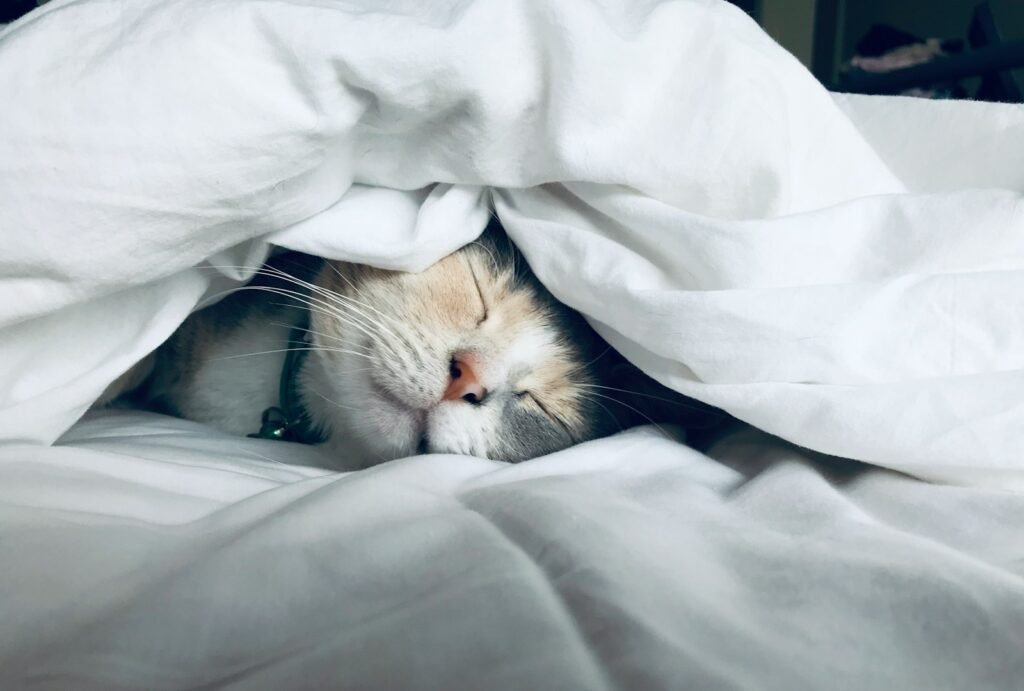
When a cat curls tightly into a ball, tucking its paws and tail beneath its body, it is often a sign of seeking warmth and security. This position is reminiscent of their wild ancestors who needed to conserve body heat and protect vulnerable organs. If your cat frequently sleeps this way, it shows they feel safe and content in their environment.
Belly Up
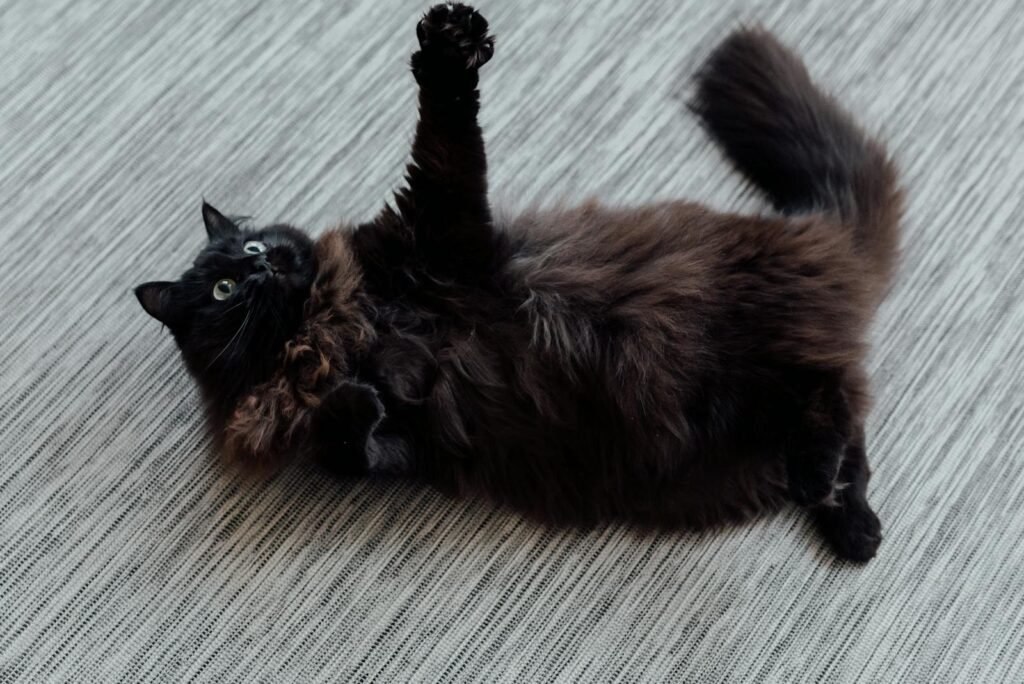
A cat lying on its back with its belly exposed is a compelling sign of trust and relaxation. Exposing the belly indicates that the cat feels safe around you, as the abdomen is a vulnerable area. If your cat sleeps like this, it’s a clear sign of comfort and security in their surroundings.
Semi-Curled or Loaf Position
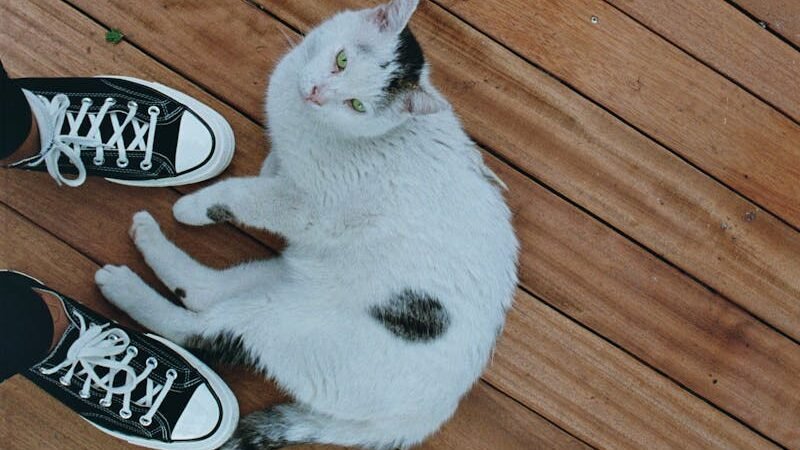
When a cat lounges in a semi-curled or loaf position, it indicates that they are in a state of light rest. This posture allows them to quickly transition from napping to full readiness if needed. Cats sleeping in this position are comfortable but remain in a semi-alert state to respond to any sudden movements or sounds.
Side Sleeping
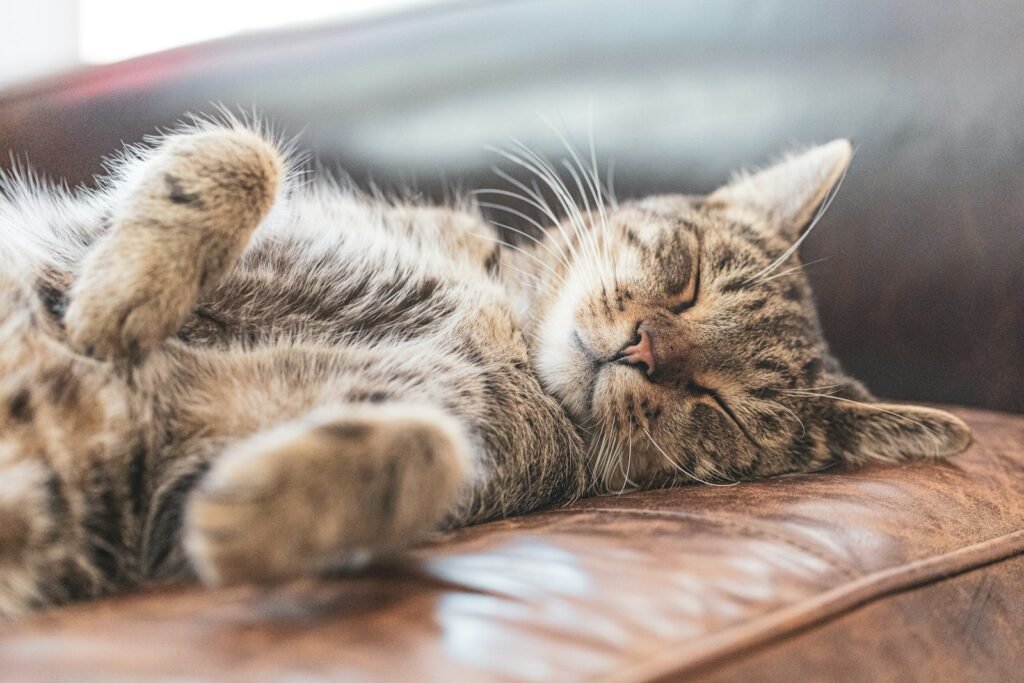
A cat resting on its side, limbs stretched forward, typically signifies that they feel relaxed and safe. This position means the cat is in a deep, restful sleep, indicating a calm and peaceful state. It’s a good sign that your cat trusts their environment and feels unfazed by potential threats.
Paw Across the Face
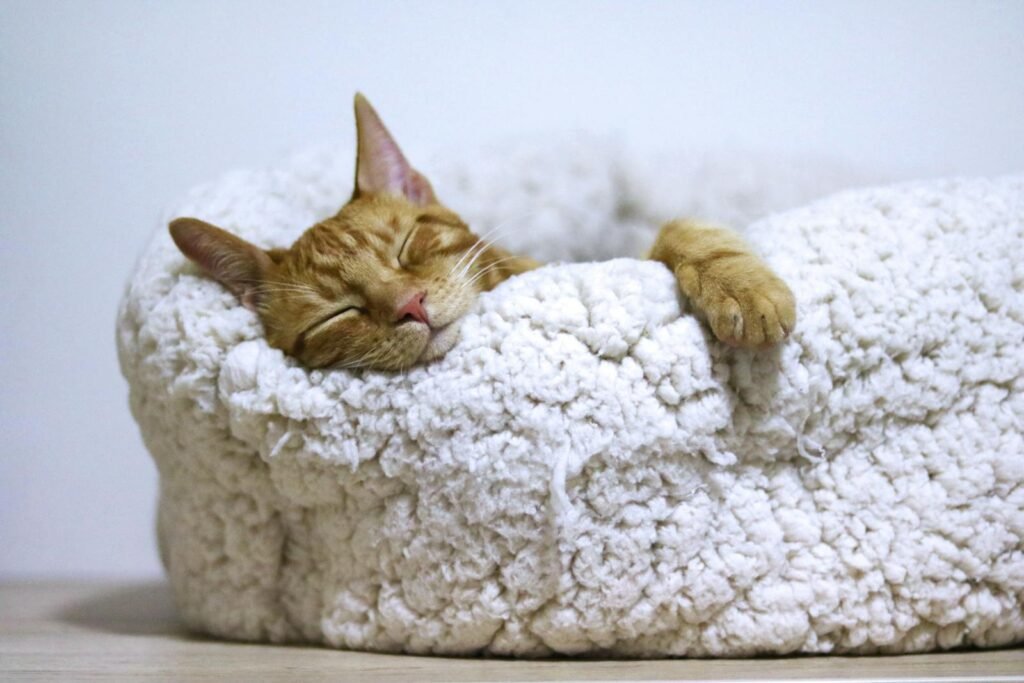
When a cat covers its face with a paw while sleeping, it is often a sign they are blocking out light or noise. This cute position indicates a desire for undisturbed rest. Cats in this position prefer minimal disruptions and are trying to create a darker, quieter space for themselves.
Tail Wrapped Protectively
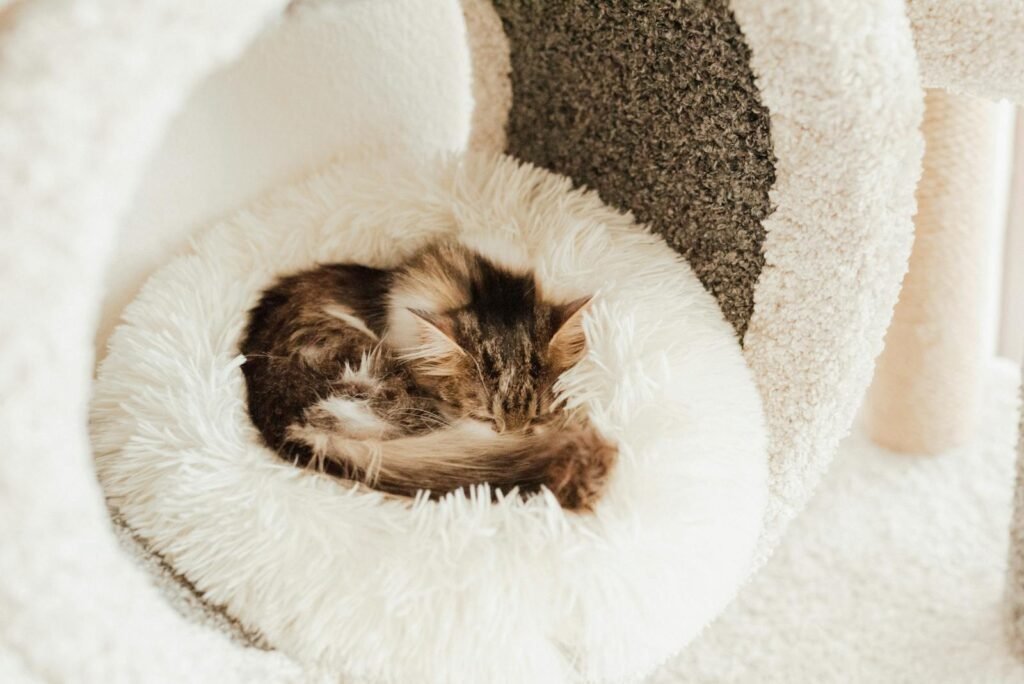
A cat curling their tail around themselves or using it to cover their face can point towards self-comfort and protection. This position can hint at slight anxiety or the need for reassurance, suggesting the cat seeks additional security. However, it’s also a practical way to keep warm and comfortable.
The Sphinx Pose
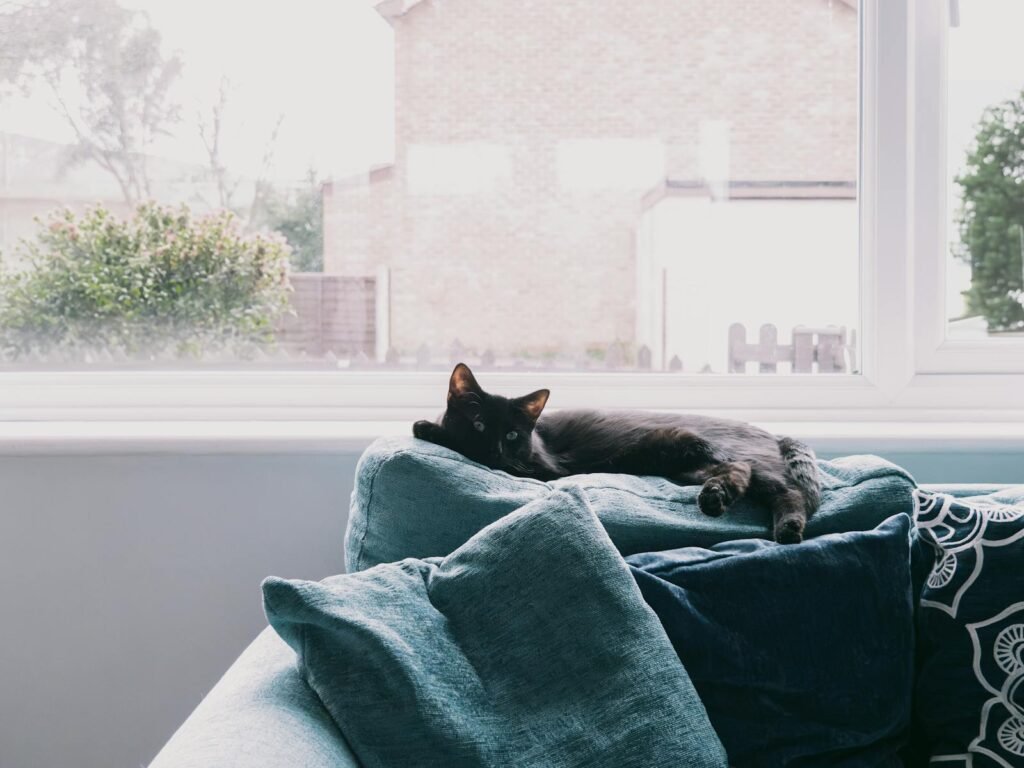
The Sphinx pose, where a cat sits upright with its paws neatly tucked under its body, signifies alertness and readiness. Although the cat appears relaxed, it remains vigilant and prepared to spring into action if necessary. This sleeping posture is usually seen in an environment where the cat feels moderately safe but wants to remain alert.
Cuddling with a Companion
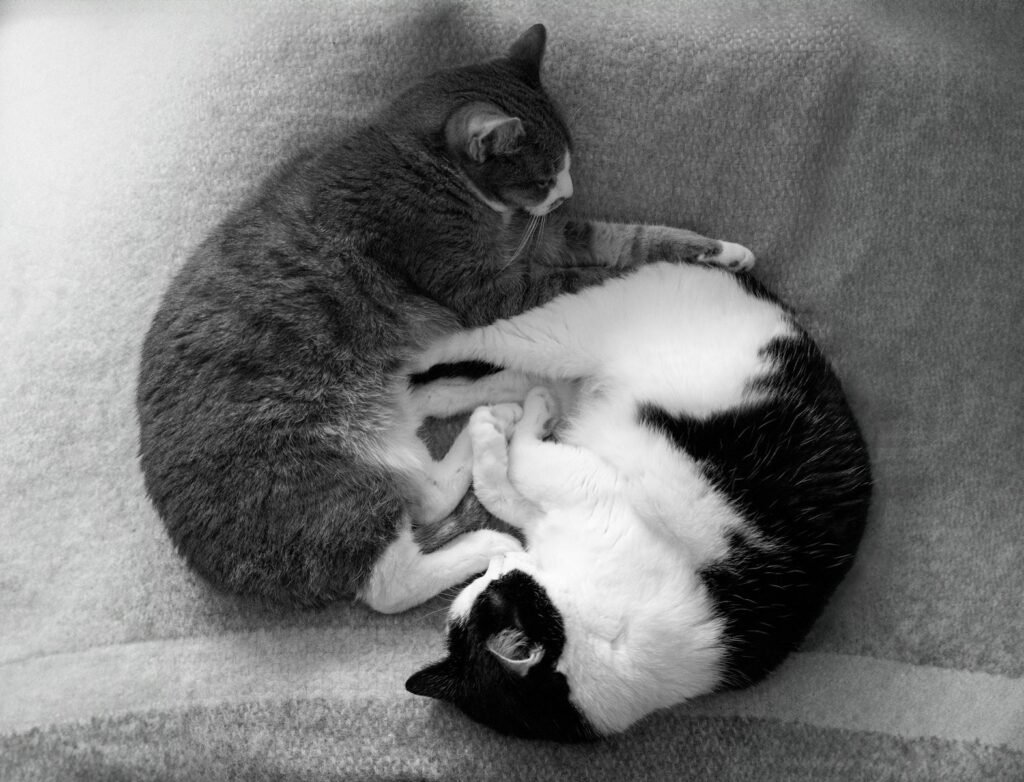
Cats that sleep while snuggled against another cat or a human exhibit strong social bonding. This behavior indicates trust and affection. If your cat frequently sleeps this way, it shows that they share a deep bond with their sleeping companion and find comfort in close physical proximity.
Perched in Elevated Spots
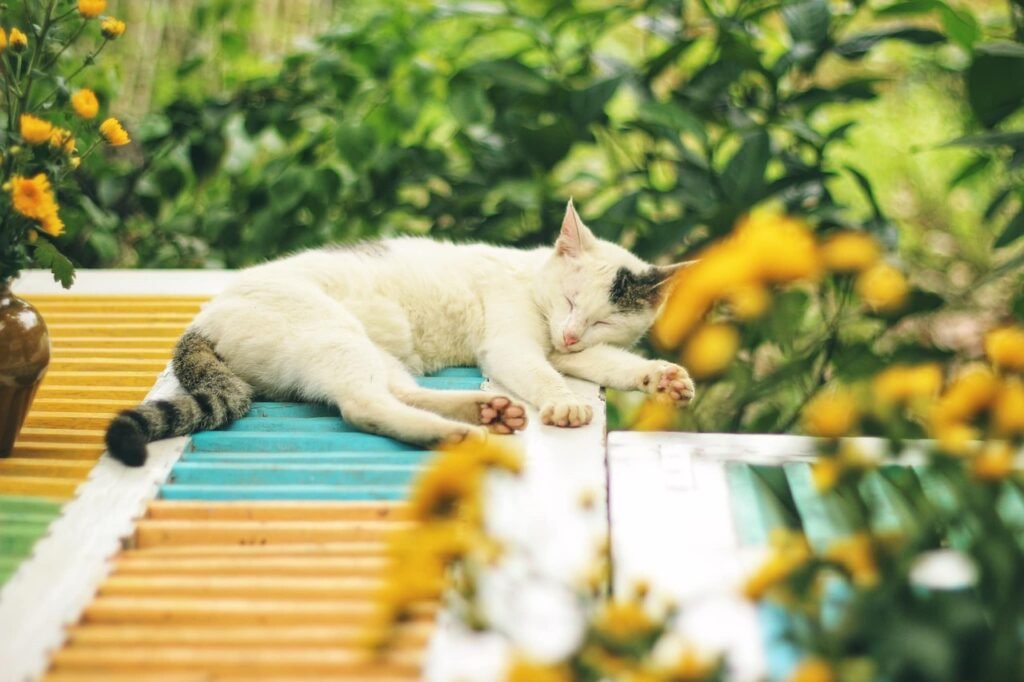
Sometimes cats choose to sleep in high places, such as cat towers or atop shelves. This instinctual behavior comes from their wild ancestry, where elevation provided safety from predators. In domestic environments, a cat selecting elevated sleeping spots likely seeks a safe vantage point and feels secure overseeing their territory.
Sleeping in Enclosed Spaces
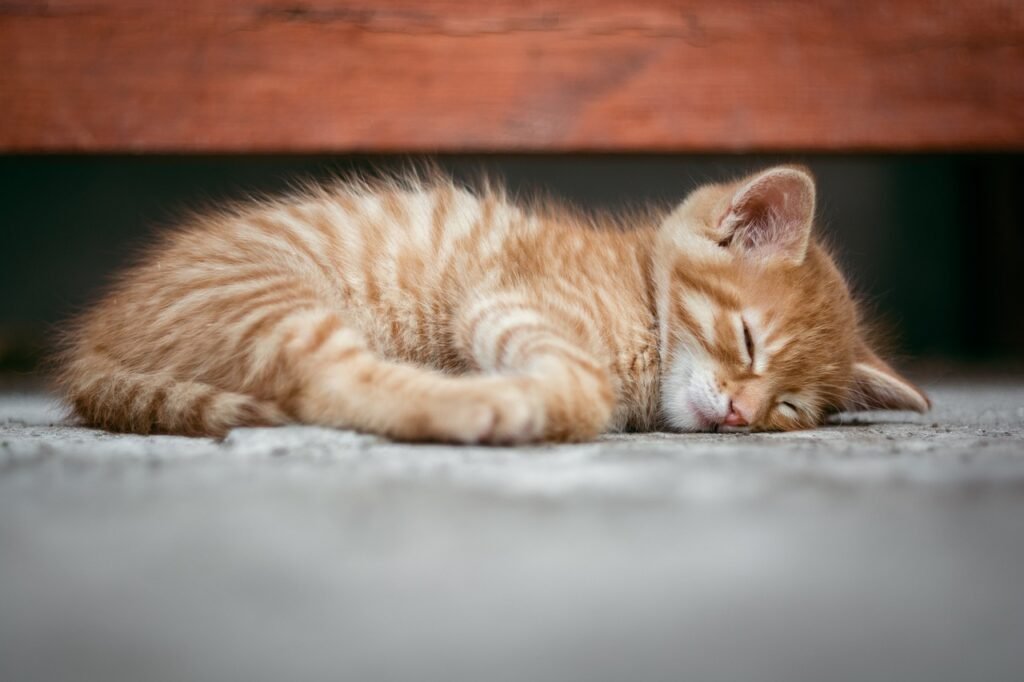
Cats are known for sleeping in boxes, closets, or covered beds, illustrating their preference for safety and seclusion. This position indicates the cat’s comfort with enclosed spaces where they can hide from potential threats. It showcases a tendency to seek refuge in cozy, hidden nooks, particularly if they feel anxious or want to be alone.
Understanding these sleeping positions helps cat owners better comprehend their pet’s needs and emotional states. By observing your cat’s preferred sleep posture, you can ensure they are comfortable and secure, thereby enhancing their quality of life.

Suhail Ahmed is a passionate digital professional and nature enthusiast with over 8 years of experience in content strategy, SEO, web development, and digital operations. Alongside his freelance journey, Suhail actively contributes to nature and wildlife platforms like Feline Fam, where he channels his curiosity for the Feline into engaging, educational storytelling.
With a strong background in managing digital ecosystems — from ecommerce stores and WordPress websites to social media and automation — Suhail merges technical precision with creative insight. His content reflects a rare balance: SEO-friendly yet deeply human, data-informed yet emotionally resonant.
Driven by a love for discovery and storytelling, Suhail believes in using digital platforms to amplify causes that matter — especially those protecting Earth’s biodiversity and inspiring sustainable living. Whether he’s managing online projects or crafting wildlife content, his goal remains the same: to inform, inspire, and leave a positive digital footprint.






